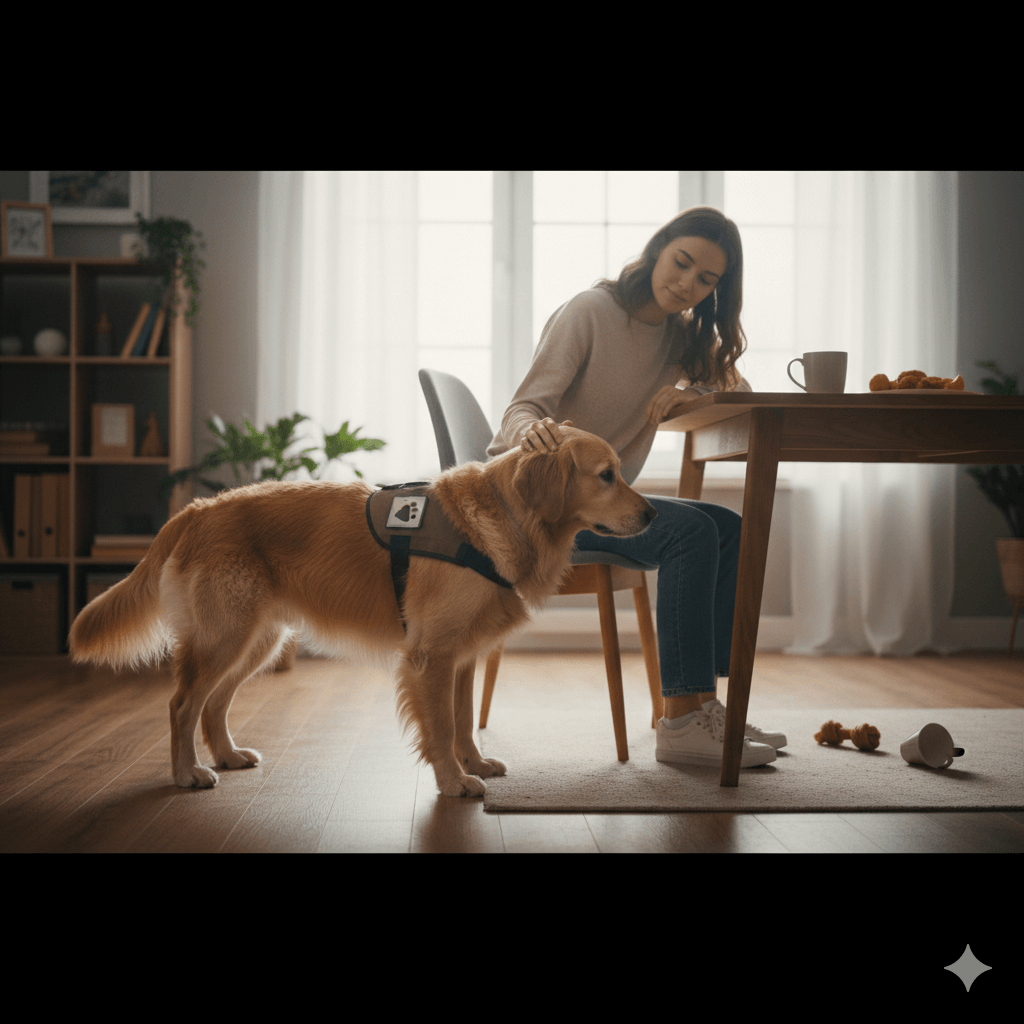Understanding Why Dogs Kick Their Back Legs
Dogs are fascinating creatures, and their behaviors often leave us intrigued. One such behavior that many dog owners observe is when their furry friends kick their back legs after relieving themselves or during playtime. While it may seem like a quirky habit, there’s more to this action than meets the eye. Understanding why dogs engage in this behavior can provide valuable insights into their instincts, communication methods, and overall well-being. In this blog post, we’ll explore the reasons behind this peculiar yet common canine behavior, its significance, and what it means for you as a pet owner.
The Science Behind Kicking Back Legs
Before diving into the behavioral aspects of kicking back legs, it’s essential to understand the physical mechanics and natural instincts that drive this action. Here’s a breakdown of what happens when your dog engages in this behavior:
Scratching the Ground:
Dogs often kick their back legs to scratch the ground after urinating or defecating. This is an instinctual behavior inherited from their wild ancestors.Scent Marking:
The pads on a dog’s paws contain scent glands, which release pheromones when they scrape the ground. This helps them mark their territory effectively.Communication with Other Dogs:
By leaving scent cues, dogs communicate with other canines in the area, conveying information about their presence, status, or intentions.Expressing Emotions:
Sometimes, kicking back legs can be a way for dogs to express excitement or frustration, especially if they’re playing or feeling overstimulated.Playful Behavior:
During playtime, some dogs mimic kicking motions as part of their energetic antics, showing joy and engagement.
In summary, while the act of kicking back legs might appear simple, it serves multiple purposes rooted in both biology and social interaction. Recognizing these nuances helps us better appreciate our canine companions’ unique ways of navigating the world.
Common Misconceptions About Kicking Back Legs
Despite being a widespread behavior among dogs, several misconceptions surround the act of kicking back legs. Let’s debunk some of these myths and clarify the truth:
It’s Only a Playful Gesture:
While kicking can occur during play, it’s not always just for fun. It often has deeper instinctual roots tied to marking territory or communicating with other animals.All Dogs Do It Regularly:
Not every dog exhibits this behavior frequently. Some breeds or individual dogs may rarely or never kick their back legs, depending on their personality and environment.It Indicates Aggression:
Contrary to popular belief, kicking isn’t inherently aggressive. It’s usually a neutral or positive expression unless accompanied by other warning signs.It Damages Lawns or Carpets Permanently:
Although excessive kicking can cause minor damage to grass or flooring, it’s unlikely to lead to permanent harm unless done repeatedly in the same spot.Training Can Completely Eliminate It:
Since kicking is largely instinct-driven, training alone won’t stop the behavior entirely. However, redirection techniques can minimize unwanted scratching indoors.
By addressing these misconceptions, we gain a clearer understanding of why dogs kick their back legs and how to interpret this behavior accurately. Remember, each dog is unique, so context matters!
Check this guide 👉Why Does My Dog Lick My Legs? Best 7 Behavior Tips!
Check this guide 👉Understanding Dog Dragging Back Legs: Best 7 Expert Tips!
Check this guide 👉Why Are My Dogs Back Legs Weak? Best 7 Expert Tips!

Reasons for Kicking Back Legs | How Owners Can Respond |
|---|---|
Scent marking | Allow outdoor space for natural behavior |
Territory assertion | Avoid punishing; acknowledge instincts |
Emotional expression | Provide outlets for energy through play |
Communication with other dogs | Observe interactions for safety |
Playfulness | Join in playtime to strengthen bonding |
Health Considerations Related to Kicking Back Legs
While kicking back legs is generally harmless, certain health-related factors could influence or exacerbate this behavior. Here’s what you should know:
Joint Issues:
If your dog suddenly starts kicking excessively or seems uncomfortable, it could indicate joint pain or arthritis. Consult a vet to rule out underlying conditions.Skin Irritation:
Dogs with sensitive paws or allergies might kick to relieve itching or discomfort. Regular paw inspections can help identify potential problems early.Overstimulation:
Hyperactive kicking during play could signal overexcitement. Teaching calming commands can help manage this behavior effectively.Behavioral Changes:
A sudden increase in kicking frequency might reflect stress or anxiety. Identifying triggers can assist in creating a more supportive environment.Paw Injuries:
Check for cuts, thorns, or foreign objects lodged in your dog’s paws, as these can cause irritation and lead to increased kicking.
By staying vigilant and proactive about your dog’s health, you can ensure their kicking remains a normal, healthy behavior rather than a sign of distress.
Tips for Managing Excessive Kicking Behavior
If your dog’s kicking becomes disruptive or problematic, consider implementing these strategies to manage the behavior constructively:
Redirect Energy:
Engage your dog in structured activities like fetch or agility training to channel their energy positively.Create Boundaries:
Use verbal cues or barriers to prevent kicking in specific areas, such as inside the house or on delicate surfaces.Reward Calm Behavior:
Reinforce calmness with treats or praise when your dog refrains from unnecessary kicking.Train Alternative Actions:
Teach commands like “sit” or “stay” to distract your dog from kicking during inappropriate moments.Consult a Professional:
If the behavior persists despite interventions, seek advice from a veterinarian or certified animal behaviorist.
With patience and consistency, you can guide your dog toward healthier habits without stifling their natural instincts.
The Role of Environment in Kicking Behavior
A dog’s environment plays a significant role in shaping their kicking behavior. Factors such as the setting, social interactions, and even the type of surface can influence how often and why a dog kicks their back legs. Here are some key points to consider:
Urban vs. Rural Settings:
Dogs living in urban areas may kick more frequently due to higher competition for territory and limited space.Surface Texture:
Softer surfaces like grass or dirt encourage kicking because they allow dogs to leave clearer scent marks.Social Dynamics:
In multi-dog households or areas with frequent canine visitors, kicking behavior may increase as dogs communicate more actively.Indoor Restrictions:
Indoor environments might suppress kicking unless the dog feels particularly excited or stressed.Environmental Enrichment:
Providing toys, puzzles, or designated digging zones can redirect kicking tendencies constructively.
Understanding the environmental factors at play helps owners create spaces that cater to their dog’s natural instincts while minimizing unwanted behaviors.
How Age Influences Kicking Patterns
Just like humans, dogs experience changes in behavior as they grow older. Age can significantly impact how often and why a dog kicks their back legs. Let’s explore this further:
Puppies:
Young pups are still learning about their bodies and surroundings, so kicking may be less pronounced or more playful.Adolescent Dogs:
During adolescence, dogs become more territorial and energetic, leading to increased kicking behaviors.Adult Dogs:
Adult dogs typically exhibit the most consistent kicking patterns, driven by maturity and established habits.Senior Dogs:
Older dogs may kick less due to reduced mobility or declining energy levels, though the behavior doesn’t disappear entirely.Health Considerations by Age:
Certain age-related conditions, such as arthritis, can affect a dog’s ability or willingness to kick.
Recognizing these age-related trends allows owners to better anticipate and respond to their dog’s needs throughout different life stages.
Training Techniques to Manage Kicking
While kicking is a natural behavior, there are effective ways to manage it if it becomes excessive or problematic. Training techniques can help redirect your dog’s energy and reinforce positive habits. Here are some practical strategies:
Positive Reinforcement:
Reward your dog with treats or praise when they refrain from kicking in inappropriate settings.Distraction Methods:
Use toys or commands to divert attention away from kicking during moments of overexcitement.Consistent Commands:
Teach specific commands like “leave it” or “settle down” to interrupt kicking behavior when necessary.Designated Areas:
Create a specific spot outdoors where your dog is allowed to kick freely, reinforcing boundaries.Patience and Repetition:
Consistency is key; repeated practice will help your dog understand what’s expected of them.
By incorporating these training techniques, you can strike a balance between respecting your dog’s instincts and maintaining control over their actions.
Frequently Asked Questions About Dog Kicking Behavior
Is kicking back legs bad for my dog?
No, kicking is typically a natural behavior. However, monitor for signs of discomfort or injury, as these could indicate underlying issues.
Why does my dog kick after pooping but not peeing?
Dogs often prioritize scent marking after defecation because feces carry stronger odors. Peeing already leaves a scent trail, so additional kicking may feel unnecessary.
Can I train my dog to stop kicking indoors?
Yes, with consistent redirection and reinforcement, you can teach your dog where it’s appropriate to kick.
Does breed affect kicking behavior?
Yes, some breeds are more prone to kicking due to their genetic predispositions or temperaments.
Should I worry if my puppy doesn’t kick?
Not necessarily. Puppies develop behaviors over time, and not all dogs exhibit kicking prominently.
Embracing Your Dog’s Unique Traits
Understanding why dogs kick their back legs enriches our connection with these incredible animals. From ancestral instincts to modern-day communication, this seemingly small behavior carries significant meaning. As responsible pet owners, it’s crucial to embrace and respect our dogs’ natural tendencies while ensuring their actions align with household rules. By fostering a balance between freedom and guidance, we create a harmonious living environment where both humans and dogs thrive. So next time you see your pup kicking up a storm, take a moment to appreciate the complexity and charm behind this delightful quirk!
Understanding Bone Supplement for Cats: Best 7 Expert Tips! – Safe, vet-approved guidance for strong feline bones & balanced nutrition.
Bone Supplement for Dogs: Best 7 Expert Tips! – Expert guide to calcium, collagen & bone health for every life stage.
Understanding Can Cats Get Sunburn: Best 7 Expert Tips! – Protect your feline from UV damage with vet-backed prevention strategies.
How to Train a Seizure Alert Dog: Best 7 Expert Tips! – Learn expert-backed steps to nurture natural instincts into reliable, life-saving seizure alerts.





